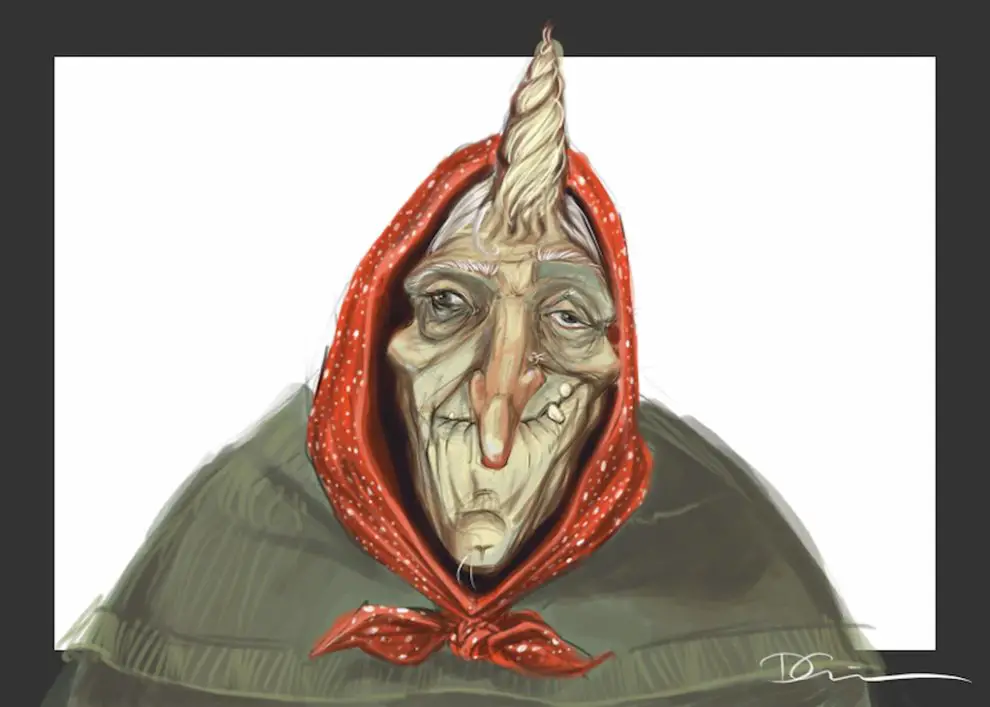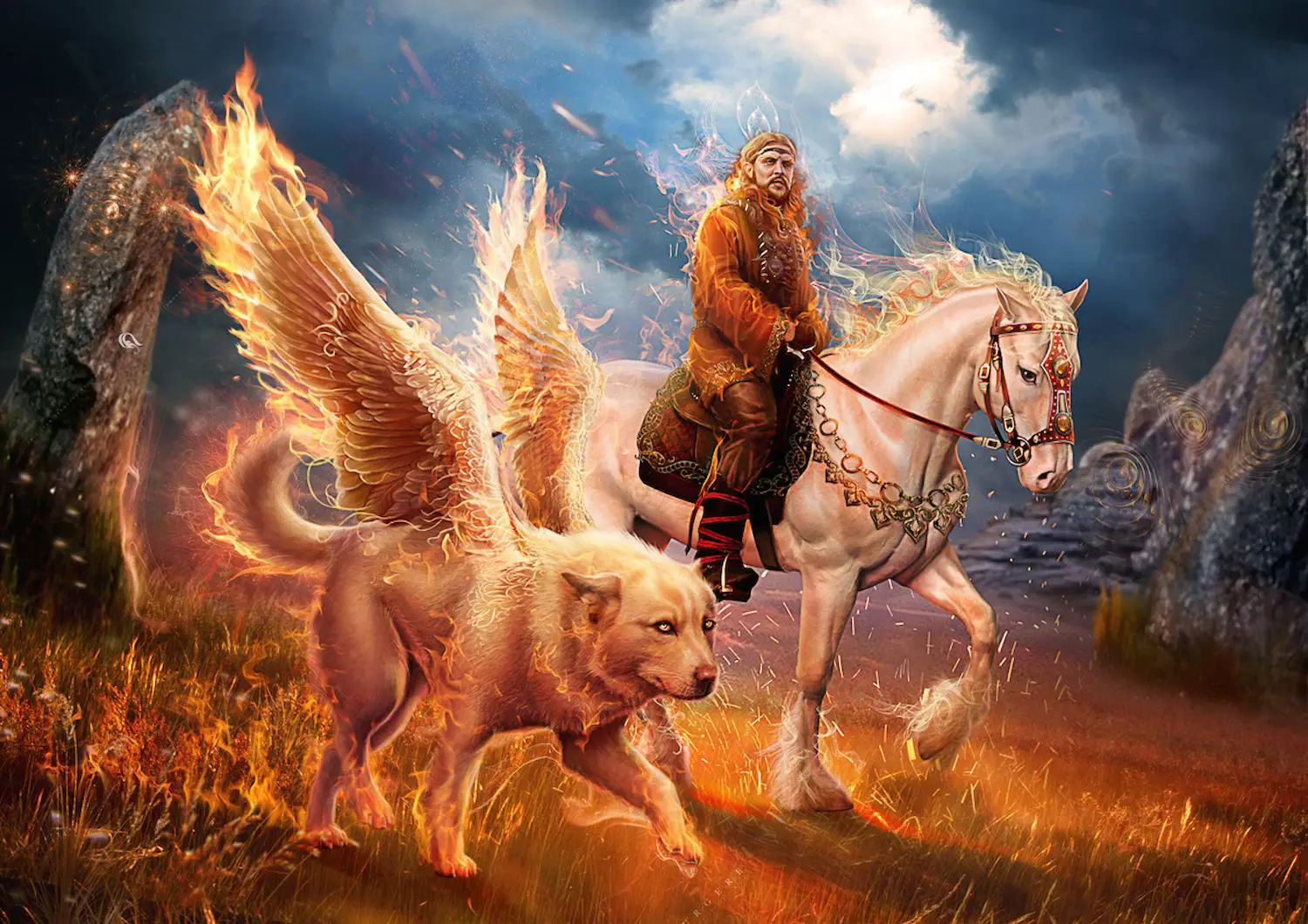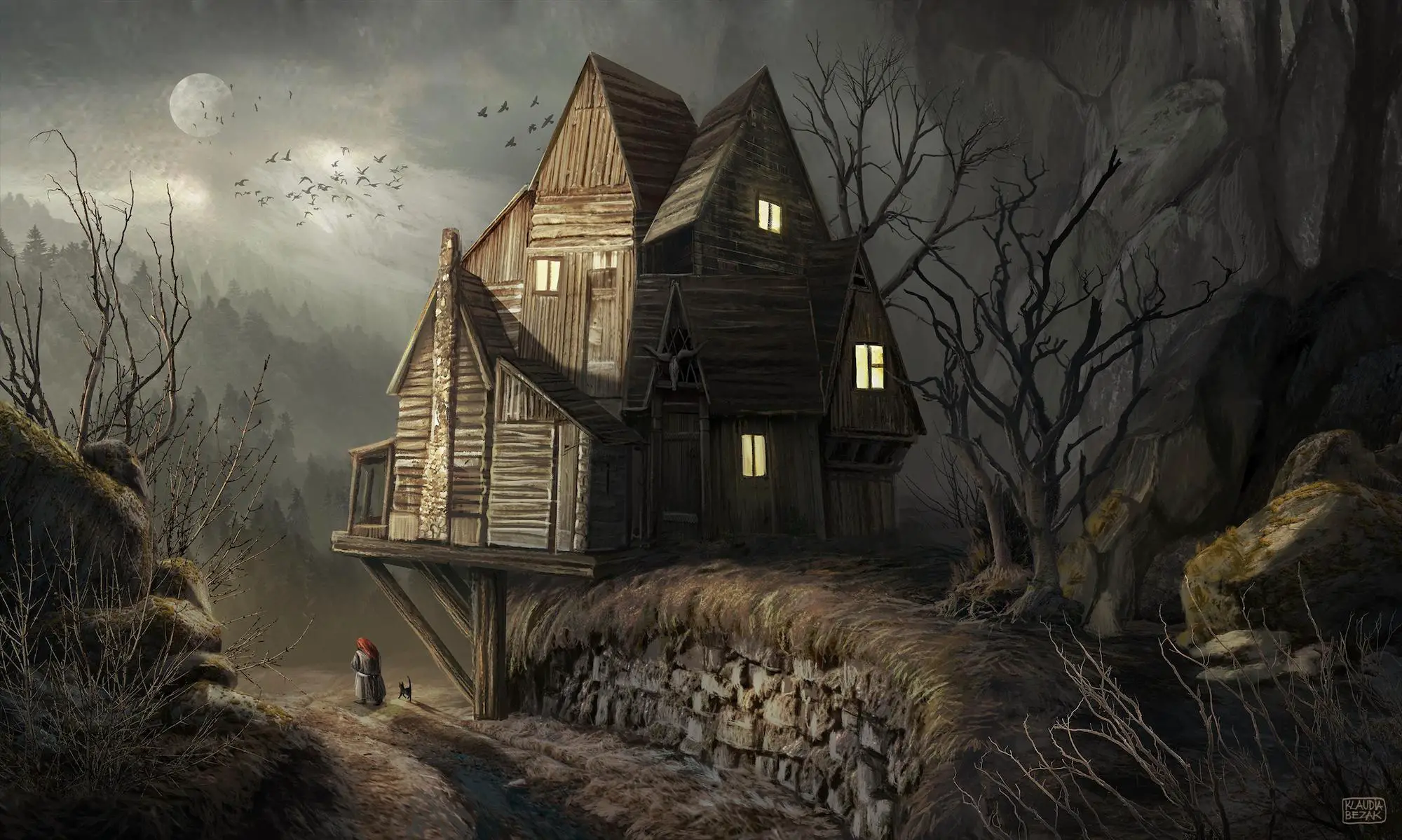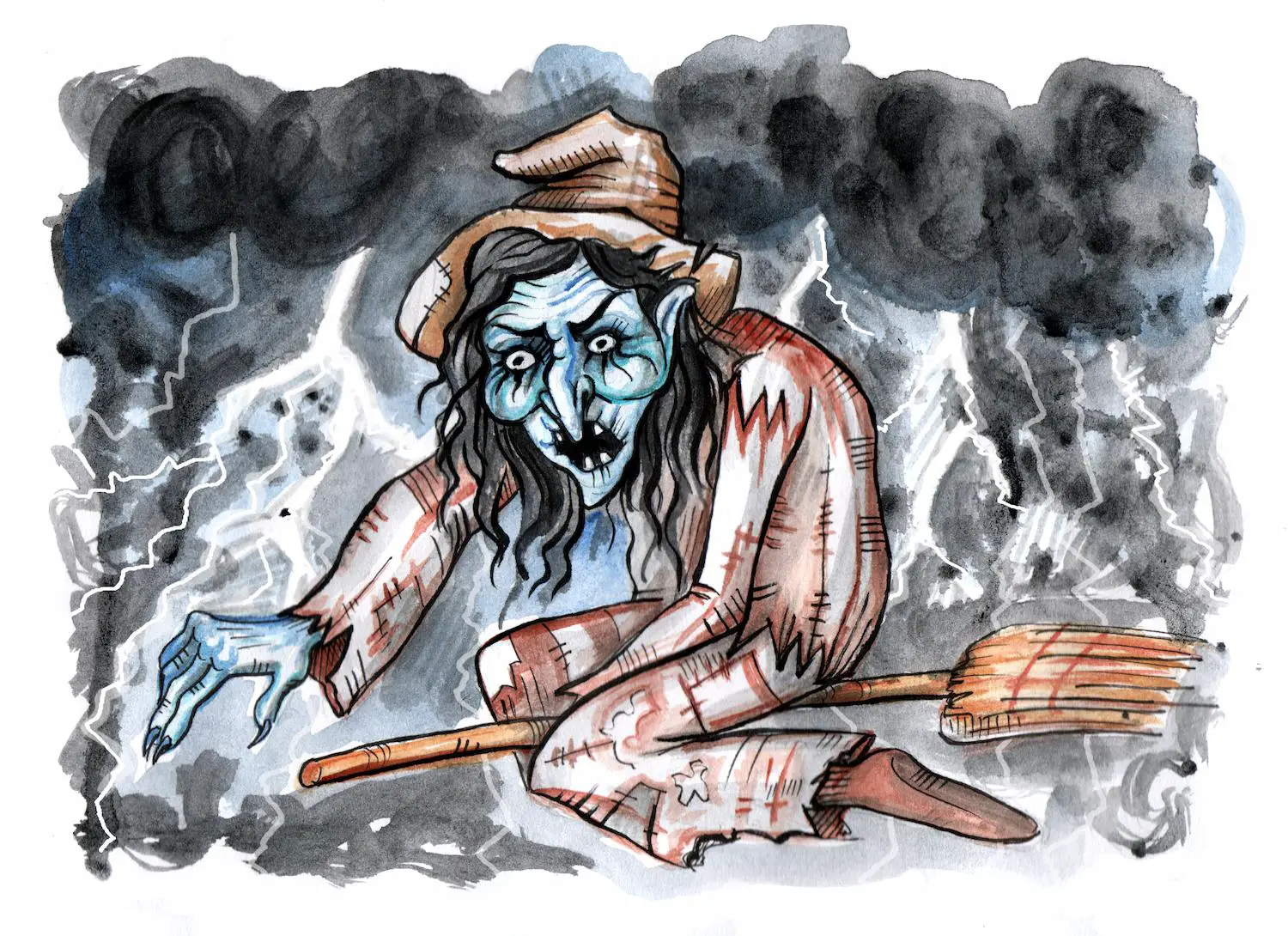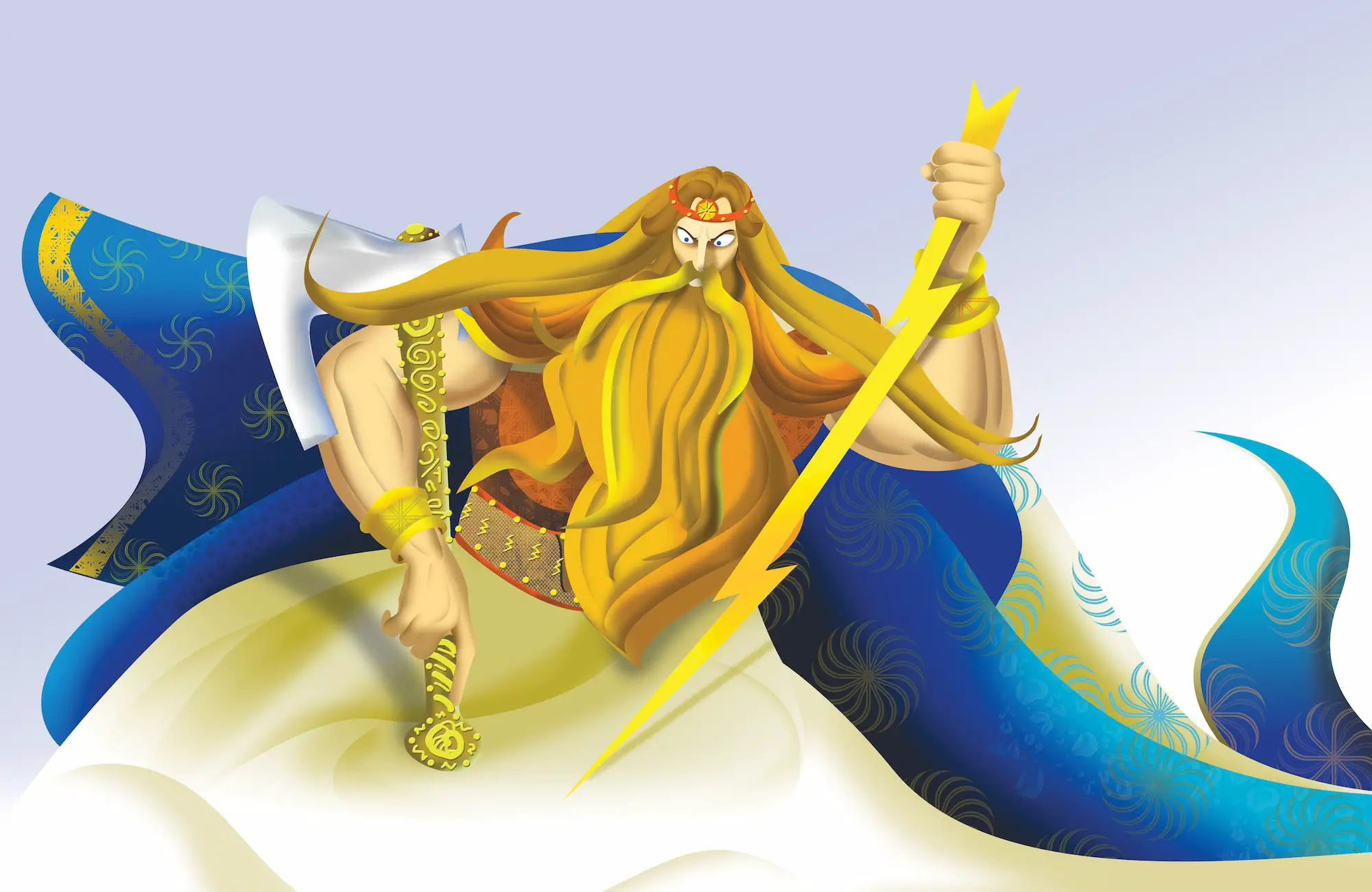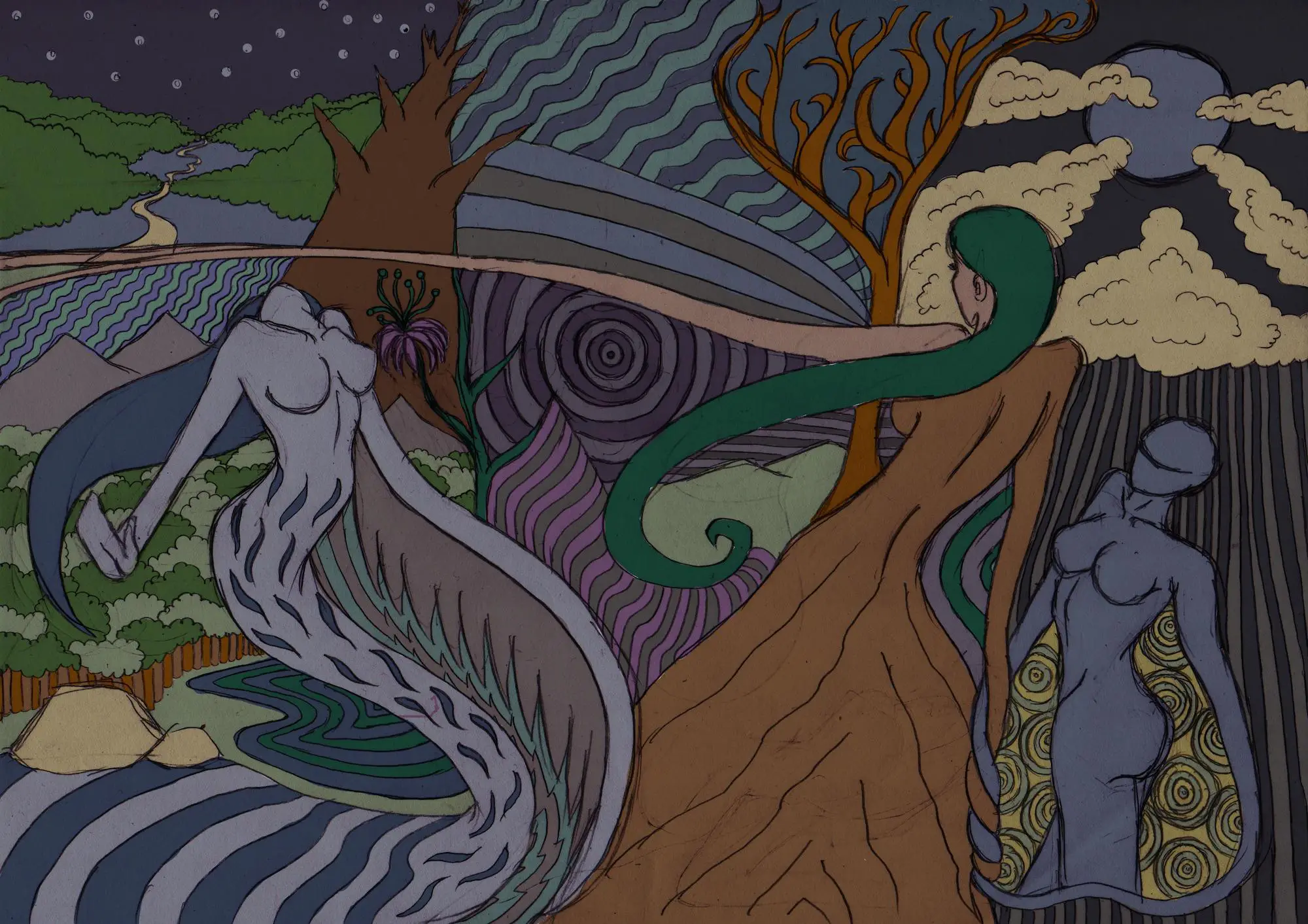If you were a child born into a Southern Slavic family, the ugly old woman with a horn on her forehead was probably one of your deepest childhood fears.
Often mixed up with her Eastern Slavic sibling, Baba Yaga, the Southern Slavic wise grandma, A.K.A. Baba Roga has a slightly different story to tell.
Table of Contents
Who Is Baba Roga (If She Isn’t Baba Yaga)?
Old women are one of the most common archetypes among Slavic nations. Wise and protective, nurturing and understanding, at times also slightly scary, Slavic grandmas play a major role in both ancient and more proximate historical narratives.
Baba Roga is one such character.
She appears in many Southern Slavic tales, the most famous one being The Golden Apple and Nine Peahens [1].
She was first mentioned in 1775 in the Michail Lomonosov book “Russian Grammar” [2].
In more modern versions of folklore tales, Baba Roga usually appears as the antagonist, a character who prevents the story’s heroes to succeed in their quests, by using her powers to place obstacles in their way.
Similar roles are played by Baba Yaga in Eastern Slavic tales.
However, there is more to this character than just being an “evil grandma,” and she differs significantly from her Eastern Slavic sister, Baba Yaga.
Baba Roga vs Baba Yaga
The two Slavic siblings, Baba Roga and Baba Yaga, although different, have their share of similarities.
They’re both old and ugly, have a hooked nose and a couple of missing teeth. Their backs are hunched, and their arms skinny and bony with creepy long fingers and nasty nails.
Baba Yaga however, is tall and skinny, while Baba Roga is rather thick and bulky. Unlike Baba Yaga, Baba Roga has a huge horn on her forehead (rog = horn).
The legend says that Baba Yaga lives in a forest hut built on chicken legs, while Baba Roga resides in a mystical dark cave. She only sees the Sun once a year on Ivandan (June 23rd).
When she does go out on her late-night quests, she never leaves without her large wooden staff.
Both sisters designed a particularly scary skull fence around their homes to drive away any potential visitors. They both share a love for horses and usually possess the best ones in the entire kingdom in which they reside.
They both also have helpers from the entire animal kingdom: swans, foxes, rabbits, wolves, or birds, they all do the bidding of Baba Roga.
In the tale of The Golden Apple and Nine Peahens, the old woman (Baba Roga) owns the fastest and the most beautiful horse, the only one that can compete against the evil dragon’s mighty horse.
She disguises it, however, into the ugliest and filthiest horse so that no one would ask her to borrow it.
What Does Baba Roga Do?
Besides playing the antagonist in a number of ancient Slavic fairy tales, Baba Roga also has the protective, nurturing role.
In contrast to standard western narratives about delightful, caring grandmas, Slavic grandmas tend to be a bit scary and rough. They love their grandchildren, but they also teach them discipline and ethics.
As we mentioned already, Baba Roga usually leaves her cave at night. She carries her large wooden staff to her strange quests: visiting children while they sleep to make sure they have pleasant dreams.
If they wake up, she scares them back to sleep. Baba Roga thinks it’s better for children to be scared of her, than to spend their childhood frightened of the world they ought to live in when they grow up (which is a real thing to be scared of, you’ll agree).
As you can see, Baba Roga has good intentions, but she has a hard time showing it. She isn’t a gentle grandma whose clothes smell like pie and pastry, but she is caring and nurturing in her own way.
Also Read: Baba Yaga in John Wick
The Moral of the Story?
Unfortunately, one of the scariest things your Southern Slavic parents could say to you when you were a child was that if you don’t behave well, or if you don’t listen to them, Baba Roga will come and take you away.
I say unfortunately because we spend our childhoods fearing the idea of this old woman, while we should have been praising and respecting her.
The mythical story actually tells the story of a conscious scapegoat. Baba Roga chooses to be the one children are afraid of, because that way they get to live a happier childhood, free from the real-world worries that are waiting right around the corner.
Sources
- https://europeisnotdead.com/serbia-the-nine-peahens-and-the-golden-apples/
- https://www.prlib.ru/en/node/442169







